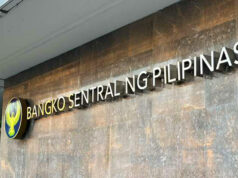Yields on gov’t debt mixed as Draghi turns hawkish
By Mark T. Amoguis, Researcher
YIELDS on government securities (GS) ended mixed last week amid hawkish sentiments from the European Central Bank after its first policy meeting this year.
Bond yields, which move opposite to prices, went up by an average of 11.04 basis points (bps) week-on-week, data from the Philippine Dealing & Exchange Corp. as of Jan. 26 showed.
“As expected, yields increased [last] week primarily because of some hawkish hints from the European Central Bank (ECB) during its January policy meeting,” said Guian Angelo S. Dumalagan, market economist at Land Bank of the Philippines (Landbank).
“ECB President [Mario] Draghi underscored the steady expansion of the currency bloc and projected inflation to rise in the medium term. His remarks fuelled views of more tightening moves from the ECB later this year,” he explained.
Late last week, ECB kept its policy rates on hold. It also said it will continue its €30-billion asset buying per month at least until the end of September.
Although Mr. Draghi made it clear that he does not expect to change policy rates in 2018, he said that there may be “very few chances” at all that interest rates could be raised this year.
Mr. Dumalagan added that the rise in yields was capped by political noise on the US government shutdown.
The US federal government shut down at midnight of Jan. 19 after failing to pass a funding bill. But US Senators last Monday reached a deal to keep the government funded until Feb. 8.
Meanwhile, a trader said the partial award of three-year Treasury bonds auctioned last week helped buoy sentiment.
Last Tuesday, the Bureau of the Treasury raised P14.891 billion out of the planned P20 billion borrowing after it partially awarded fresh three-year bonds for a coupon rate of 4.25%.
National Treasurer Rosalia V. De Leon said the auction committee decided for a partial award to temper the rates of the debt papers.
At the secondary market on Friday, double-digit gains were recorded for the yields on the 91-day, 20-year, two-year, and 364-day debt papers as they increased week on week by 66.90 bps, 38.22 bps, 28.42 bps, and 24.56 bps, respectively, to fetch 2.8767%, 6.3536%, 4.1857%, and 3.0439%.
Trailing behind were the yields on 10-year, 182-day, and three-year notes, which increased by 9.71 bps, 0.79 bp, and 0.61 bp, respectively, to close at 6.0421%, 2.9039%, and 4.1575%.
On the other hand, the rate of the four-year Treasury bond (T-bond) dropped the most, losing 47.97 bps to yield 4.4557%. It was followed by the yields on the seven- and five-year T-bonds, which declined by 5.71 bps and 5.09 bps, respectively, to close at 5.4236% and 4.6850%.
For this week, Landbank’s Mr. Dumalagan said, “yields are expected to still move with an upward bias, supported by likely hawkish signals from the US Federal Reserve and potentially firm US data on PCE (personal consumption expenditures) inflation and employment.”
The US PCE price index for December will be reported on Jan. 29, while the employment data is scheduled to be released on Feb. 2.
“Moreover, yields might also increase, as likely firm growth data from the euro area may continue to fuel views of more tightening moves from the ECB later this year,” he added.



